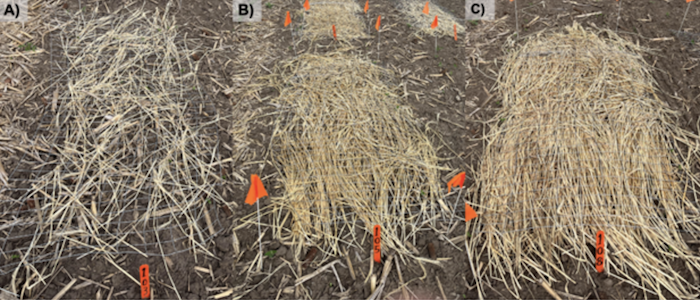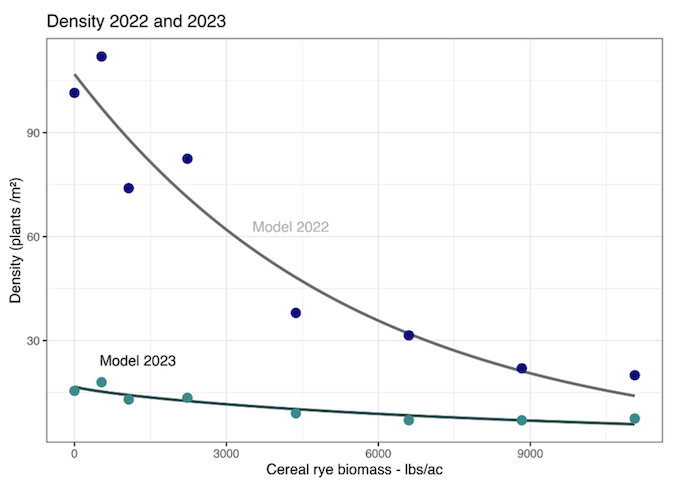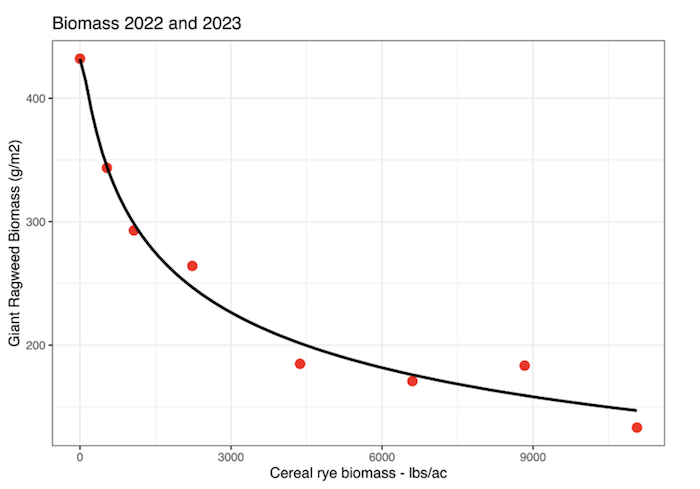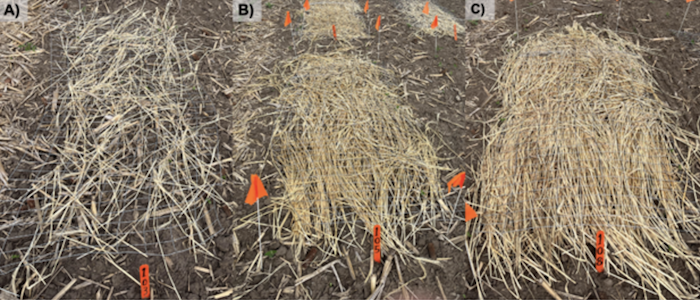
Figure 1. Overview of plots with dry cereal rye cover crop biomass corresponding to: A) 1,100 pounds per acre, B) 4,400 pounds per acre, and C) 11,000 pounds per acre.
Results
Our findings revealed a consistent reduction in giant ragweed density and biomass with an increase in cereal rye biomass for both years (Figures 2 and 3). A trend of decreasing giant ragweed density was evident with the increasing levels of cereal rye biomass. In 2022, ~3,800 pounds of dry cereal rye biomass per acre was necessary to achieve 50% reduction in giant ragweed density 42 days after study establishment. In 2023, ~6,700 pounds of dry cereal rye biomass per acre was necessary to achieve 50% reduction in giant ragweed density 42 days after study establishment (Figure 2). Our results indicate that between years, an average of 3,500 pounds of dry cereal rye biomass per acre was necessary to achieve 50% reduction in giant ragweed biomass 42 days after study establishment (Figure 3).
Figure 2. Density regression curves for 2022 and 2023 show the effects of cereal rye cover crop biomass on giant ragweed density 42 days after study establishment.

Figure 3. Biomass regression curve for 2022 and 2023 show the effect of cereal rye cover crop biomass on giant ragweed biomass 42 days after study establishment.





Post a comment
Report Abusive Comment